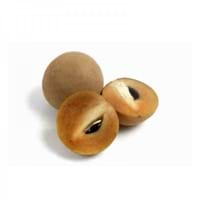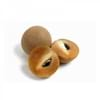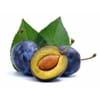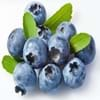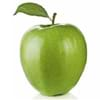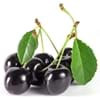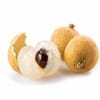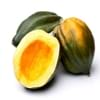Health Benefits
Anti-inflammatory properties, Arthritis treatment, Regulates Blood Sugar, Unknown
Anti-oxidant properties, Beneficial in curing fever, Cancer prevention, Heart care, Reduces nervous tension
General Benefits
Boosts immune system, Controls blood sugar levels, Digestive aid
Anti-inflammatory properties, Boosts immune system, Controls blood pressure, Digestive aid, Eye care, Fights against infections, Helps in weight loss, Improves blood circulation
Skin Benefits
Nourishes skin, Protects skin from oxidative stress
Anti-aging benefits, Brightens and lightens complexion, Reduces wrinkles
Hair Benefits
Prevents hair loss, Promotes longer and healthier hair, Regulates hair growth
Good conditioner, Promotes longer and healthier hair, Treatment of dandruff
Allergy Symptoms
Asthma, Red rash, Swelling of mouth, tongue or lips
Abdominal pains, Anaphylaxis, Inflammation
Side Effects
Diarrhoea, Vomiting
Affects blood glucose levels, Decrease in blood sugar levels, Coagulation
Best Time to Eat
As a snack in the late afternoon
Along with meal, As a snack in the late afternoon, Don't consume at night and before bed, Eat the fresh ones, avoid mixing with any other foods, don't eat after meal.
Vitamin A (Retinol)
Not Available
Vitamin B1 (Thiamin)
Not Available
Vitamin B2 (Riboflavin)
Not Available
Vitamin B3 (Niacin)
Not Available
Vitamin B5 (Pantothenic Acid)
Not Available
Vitamin B6 (Pyridoxin)
Not Available
Vitamin B9 (Folic acid)
Not Available
Vitamin C (Ascorbic Acid)
Calories in Fresh Fruit with Peel
Calories in Fresh Fruit without Peel
Not Available
Not Available
Calories in Frozen Form
Not Available
Calories in Canned Form
Not Available
Calories in Juice
Not Available
Calories in Jam
Not Available
Calories in Pie
Not Available
Type
Berry
Berry, Tree fruit
Season
Winter
Autumn, Winter
Varieties
Bush Table Queen, Heirloom Table Queen, Festival Hybrid, Early Acorn Hybrid, Table Ace, Ebony and Cream of the Crop
Early Golden, John Rick, Miller, Woolbright and Ennis
Seedless Variety
Not Available
Yes
Color
Dark green, Green-yellow, Orange green
Orange, Red, Yellow
Inside Color
Not Available
Yellow
Origin
Central America, North America, Unknown
Eastern United States
Soil Type
Well-drained
Sandy loam, Well-drained
Climatic Conditions
Cold, Sunny
Can tolerate wide range of climates, Sunny
Facts about
- It was named as Acorn Squash for its resemblance to a large ribbed acorn.
- It is said that squash was being grown in Mexico as long as 10,000 years ago.
- It was the first food cultivated by native American Indians.
- It is said that formation of seeds inside the persimmon fruit shows what type of winter is coming(type of snow).
- There are about 2000 varieties of this fruit.
- The American persimmon has another name 'Possumwood'.
Cocktails
Not Available
Yes
Other Countries
Egypt, India, Iran, Italy, Mexico, Russia, Turkey, Ukraine, United States of America
Azerbaijan, Brazil, Costa Rica, Japan, Korea, Pakistan
Top Importer
UAE
United States of America
Top Exporter
India
United States of America
Botanical Name
Cucurbita Pepo
Diospyros virginiana
Synonym
Winter Squash
Not Available
Subkingdom
Tracheobionta
Tracheobionta
Division
Magnoliophyta
Magnoliophyta
Class
Magnoliopsida
Magnoliopsida
Subclass
Dillenhidae
Dillenhidae
Order
Cucurbitales
Ericales
Family
Cucurbitaceae
Ebenaceae
Genus
Cucurbita
Diospyros
Species
Pepo
D. virginiana
Generic Group
Not Available
Not Available
Compare Sapota and American Persimmon
It is important compare Sapota and American Persimmon as both the fruits have a different nutritional value. Their comparison can be done on the basis of their vitamin and mineral content, calories, benefits as well as characteristics, making it easier for us to choose the best fruit for our diet. Their general health benefits are as follows:
Sapota Benefits: boosts immune system, controls blood sugar levels and digestive aid.
American Persimmon Benefits: anti-inflammatory properties, boosts immune system, controls blood pressure, digestive aid, eye care, fights against infections, helps in weight loss and improves blood circulation.
Fruits are also used as a remedy for various hair problems. The hair benefits of Sapota are: prevents hair loss, promotes longer and healthier hair and regulates hair growth and hair benefits of American Persimmon are: good conditioner, promotes longer and healthier hair and treatment of dandruff. Some fruits are known to cause allergic reactions. The allergy symptoms of first fruit are: asthma, red rash and swelling of mouth, tongue or lips and the symptoms of second fruit are: abdominal pains, anaphylaxis and inflammation. Get sorted Sapota vs American Persimmon comparison with the help of fruit comparison tool by fruitvs.com.
